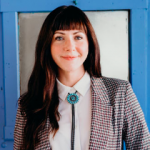
From shellfish to squid, barramundi to black cod, and trout to tuna, Above Sea Level (ASL) has been providing quality wholesale seafood to northern New Mexico since 1989. They supply around 150 restaurants, along with about a half dozen grocery stores, including the La Montañita Co-ops, Cid’s Food Market (Taos), Eurozone Food Distributors (Albuquerque), Kaune’s Neighborhood Market and El Dorado Supermarket (Santa Fe), and the Los Alamos Cooperative Market.
I recently met up with ASL owners Jeff “Rojo” Koscomb and Butch Wilder at their headquarters in an industrial area of southwest Santa Fe. As we toured their impeccable and chilly warehouse full of thousands of pounds of fresh seafood and ice, the partners answered my burning questions about where our “local” seafood comes from, sharing their opinions on the future of ocean sustainability and some of the challenges of bringing fresh seafood to the desert. The future of the oceans is uncertain and sourcing seafood is neither simple nor straightforward, and hopefully these types of conversations will encourage us all to be better consumers and stewards of the seas, even if we live hundreds of miles from the coast.
How did you get involved in the seafood industry?
Koscomb: In 1987, I moved to Santa Fe to work for Coyote Cafe as a chef, and I began buying the seafood for the restaurant from ASL. The guy who owned it at the time tried to hire me but I was busy going around the country with Coyote’s then chef Mark Miller opening restaurants. But after a while I realized how much I loved Santa Fe and I didn’t want to leave, so I ended up joining ASL in 1992.
Wilder: I came on board in 1997 and I was a chef also. In fact, everyone who works here is a former cook.
Koscomb: That’s one of the things that appeals to local chefs about using us. We’ve known them all for years, we know what they’re looking for, and our guys know where to put everything in the walk-in refrigerators. It’s a chef-to-chef conversation rather than a salesperson-to-chef transaction.
How is being a seafood distributor for a landlocked state different from being on a coast? What is your distribution process?
Koscomb: From the time the product is unloaded off the boat on either coast, taken to a cargo plane, and then picked up in Albuquerque, it’s probably been twenty-four to thirty-six hours since it was harvested. We also have our own hired refrigerated trucks going to Los Angeles twice a week, which actually can get the fish back here even faster because of all the issues going on with the airlines right now. So really we’re maybe getting the product only twelve hours after we would have had it on the coast. We are also mostly getting the fish whole and on the bone. This keeps it fresher than if it’s cut, which is something we do in-house once an order comes in.
Wilder: Another thing about buying the fish whole is that you can pack it on ice without water getting on the fillets, which degrades the quality. We can’t see anything until it gets here, so we work with purveyors who we know have high standards. Plus they inspect everything thoroughly because they don’t want us flying it back. This is our livelihood, we are responsible for ten other people here, and we care about the people we sell to, so we are going to do the best we possibly can to make everything as right as it can be.
Is it better to buy fish fresh or frozen?
Wilder and Koscomb: Besides our Chilean sea bass, we sell everything fresh, but you’d be surprised how much of the “fresh” fish you buy was previously frozen. Especially in sushi bars. But so much of that freezing is done on the boats now. For decades, that bad rap about frozen fish was true because it wouldn’t be frozen until the ship came in. So that seafood may have been out of the water for hours to weeks. But now they are able to do the “individually quick-frozen” (IQF) method right out of the water at the peak of freshness. Some fish freeze better than others, though. The fattier the fish, the better it freezes. And tuna, for instance, loses its color when it’s frozen.




Has the pandemic affected your supply chain? Have prices gone up?
Koscomb: Everything is more expensive. Lobster is twice as much. Crab went through the roof. Salmon is up 30 percent. Luckily, we sell to these great restaurants that are high end and can absorb some of the cost or design their menus around things that are more affordable, but . . . now, we’re seeing these secondary problems. We sell herring in cream to La Montañita Co-op but we can’t do it right now not because we can’t get the herring but because we can’t get ahold of the plastic tubs! Or fisheries can’t find plastic containers to ship their product in or plastic bags to put the salmon in.
Wilder: Luckily, we were able to keep our whole staff employed. . . . But we took a big hit when the initial restaurant shutdown happened. We had no notice and had to give away thousands of dollars in product to whoever could take it.
How has the seafood industry changed since you first started?
Wilder: There’s a lot more accessibility to different products from all over the world. There’s also a lot more farm-raised products. I don’t think we could cover the amount of fish that the world is consuming without farm raising. And I feel like it gets a bad rap . . .
Koscomb: Well, now people have figured out the proper way to do it. Before, a lot of it was done in Asia in these big concrete aquariums, essentially. Now, farms are often sectioned-off areas in ocean water. They can move the pens with every new batch. For instance, we can now get these beautiful farm-raised salmon out of Norway that are hormone and antibiotic free, because if a fish is healthy, it shouldn’t need medication. And mad cow disease made people really realize you shouldn’t be feeding an animal with itself.
Wilder: In closed pens, there’s more manipulation. You have to control the nitrates in the water, which are affected by the feces, for example. Ocean raising is better for the fish and for the ocean. And those fish are fattier and more flavorful because they don’t get as much exercise. But it’s all about sourcing from a place that’s doing it right.
Koscomb: The majority of the fish we sell are wild caught from all over the world. But it’s great to supplement with farm raised, especially when the wild products are out of season. For example, we have this gorgeous striped bass right now that is raised off the west coast of Baja Mexico because the bass season off the East Coast is so short.
As the effects of climate change and overfishing have become more evident in our seas, how do you see your industry addressing those challenges, and how does ASL ensure that its seafood is sustainable?
Koscomb and Wilder: Sustainable can mean a lot of things to each species. Certain species don’t breed until they’re a certain size, so it’s important not to buy fish too small, before they’ve had a chance to breed. We don’t buy anything from those five-mile nets that are catching sea turtles and dolphins and whales. We make sure our swordfish is caught using lines that go below the boat, where the albatross can’t get to the bait. We have long-term relationships with purveyors we know and trust. We’ve been buying tuna from the same guys for decades. If prices go up a little that’s fine, we don’t jump ship.
From an industry standpoint, it’s a lot about regulation and management. Prices have gone up on fish like halibut because it was so overfished fifteen to twenty years ago, so now it’s highly regulated. To combat overfishing, a boat’s catch is weighed at the docks, and they only have so much poundage they can take each season. And the future might be ocean farm raising.
How else can consumers ensure they are purchasing sustainable and/or fresh seafood?
Wilder and Koscomb: Ask the butcher/fishmonger questions about who they source from, and they really should be able to answer them. If they can’t, go elsewhere. With freshness, if you walk into a grocery store and can smell fish from the front door, that’s not a good sign. Your eyes can tell you a little bit: Does it look dry, or does it have a nice sheen? Are the gills still red? And, keep in mind if it’s cheap. . . . As they say, “Good fish ain’t cheap, and cheap fish ain’t good.”
Is there a “sexy” fish right now?
Koscomb: All the restaurants want branzino.
What’s underrated?
Koscomb: Opah is delicious, mild, and still affordable.
What do you like to make at home?
Koscomb and Wilder: Anything grilled outside. [They laugh.] We smell enough fish at work.
*This interview has been edited for clarity and length.

Candolin Cook
Candolin Cook is a historian, writer, editor, and former co-editor ofedible New Mexico.She recently received her doctorate in history from the University of New Mexico and is working on her first book.


